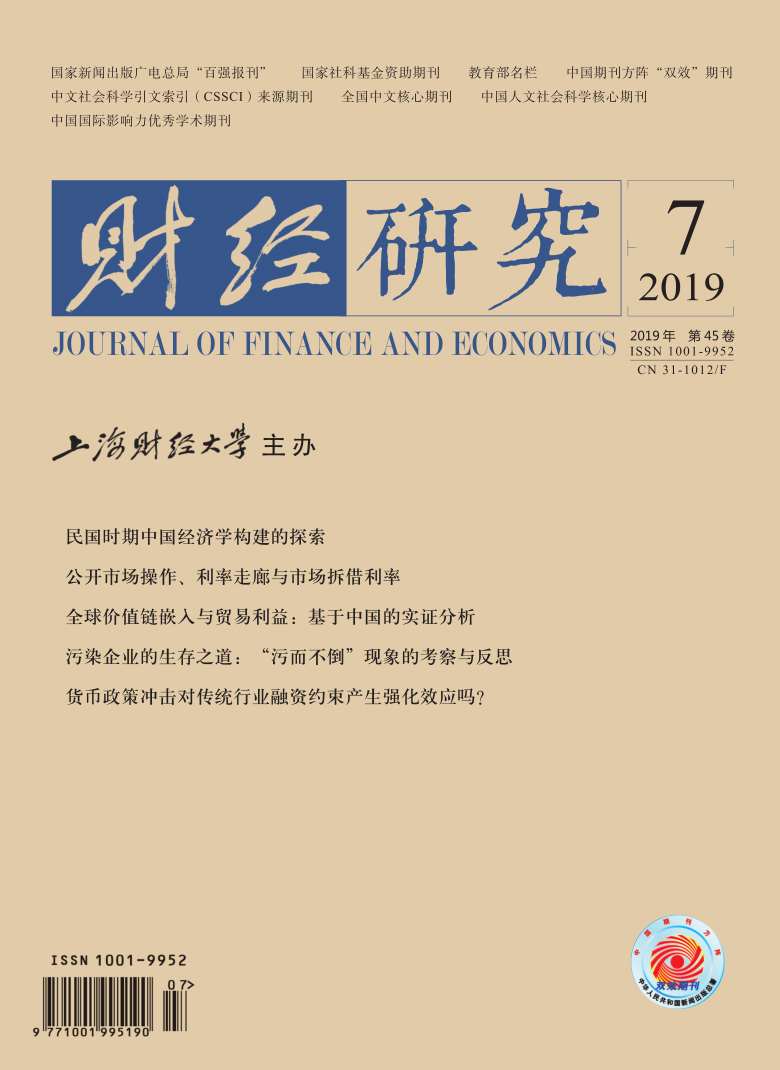In recent years, there have been sharp fluctuations in short-term interest rates in China’s financial markets, posing challenges to the implementation of monetary policies and the stability of financial markets. There was a similar phenomenon in LIBOR rates of major currencies during the financial crisis. After the financial crisis, the " interest rate corridor” gradually became a new trend of monetary policies, and the central bank of China gradually introduced a similar mechanism to implement monetary policies. This paper sets up a three-phase model of the inter-bank market, expanding the traditional analytical framework into a peer-to-peer market with OTC market attributes. This approach enables the model of this paper to characterize the heterogeneous characteristics of the bank’s liquidity, and distinguish between banks which need interest rate corridors and those which have no need of the corridors, so that the unique mechanism that interest rate corridors affect market liquidity can be reflected. The establishment of the interest rate corridor mechanism will affect the liquidity position of commercial banks by affecting the expected liquidity management costs and benefits of commercial banks. Thus, the inter-bank offered rate can be impacted and it will be stable within interest rate corridors. In order to highlight the unique mechanism of the interest rate corridor mechanism, this paper first analyzes the impact of open market operations with characteristics of quantitative regulation on market interest rates, and demonstrates the advantages and disadvantages of the interest rate corridor mechanism through comparison. The theoretical analysis shows that open market operations and interest rate corridors have their own advantages and disadvantages in regulating interest rate fluctuations. First, open market operations regulate interest rate volatility by regulating the liquidity of the whole interbank market. Interest rate corridors only need to adjust the liquidity of part of the banks to regulate interest rate fluctuations, so interest rate corridors affect market activities from the margin, and the regulation has less disturbance to the market. Second, in terms of regulating short-term interest rates, both the expected open market operations and interest rate corridor adjustments will be constrained by the " liquidity substitution effect”. Because of the liquidity substitution effect, the adjustment of open market operations may be completely offset, but that of interest rate corridors cannot be. In terms of stabilizing interest rates, open market operations rely on the judgment of the central bank, while interest rate corridors can be more independently implemented. Finally, under the interest rate corridor mechanism, a tight mortgage policy may cause the inter-bank offered rate to break through the interest rate corridor ceiling. However, the central bank can adjust the mortgage policy, using the camera selection strategy and the cooperation with macro-prudential management, which can respectively achieve different purposes for post-hoc response and pre-existing prevention.
 / Journals / Journal of Finance and Economics
/ Journals / Journal of Finance and EconomicsJournal of Finance and Economics
LiuYuanchun, Editor-in-Chief
ZhengChunrong, Vice Executive Editor-in-Chief
YaoLan BaoXiaohua HuangJun, Vice Editor-in-Chief
Open Market Operations, Interest Rate Corridors and the Inter-bank Offered Rate
Journal of Finance and Economics Vol. 45, Issue 07, pp. 31 - 44 (2019) DOI:10.16538/j.cnki.jfe.2019.07.003
Summary
References
Summary
[1]Dong X J. From “hot money” to “money shortage”: The reason, influence and countermeasures of the situation reversal [J]. Economics Information, 2013, (7): 94-98. (In Chinese)
[2]Ma J, Shi K, Wang H L, et al. A study of interest rate transmission dynamics[J]. Journal of Financial Research, 2016, (1): 31-49. (In Chinese)
[3]Niu M H. Reunderstanding of the operation mechanism of interest rate corridor[J]. China finance, 2018, (9): 25-27. (In Chinese)
[4]Niu M H, Zhang L N, Zhang X. Interest rate corridor, interest rate stability and regulation cost[J]. China finance, 2017, (7): 16-28. (In Chinese)
[5]Sun G F, Cai C C. Money market interest, liquidity and demand, and central bank liquidity management: New analytic framework of money market interest rates fluctuation[J]. Economic Research Journal, 2014, (12): 33-59. (In Chinese)
[6]Wu G, Li B. Monetary quantity, interest rate regulation and policy transformation[M]. Beijing: China Finance Press, 2014. (In Chinese)
[7]Yang G, Sun P Y. Does excess liquidity cause “money shortage”: Analysis based on heterogeneous DSGE framework[J]. Nankai Economic Study, 2015, (5): 59-73. (In Chinese)
[8]Zhang M. The root cause and policy implications of interbank cash crunch[J]. Financial Market Research, 2013, (7): 30-33. (In Chinese)
[9]Zhang M, Guo Z R, He F. Why did the “money shortage” happen: Analysis of influencing factors of Shanghai interbank offered rate[J]. Studies of International Finance, 2016, (12): 84-93. (In Chinese)
[10]Zhu M N, Hou Z. Research on capital mismatch of Chinese commercial banks: Thinking under the background of “money shortage”[J]. Studies of International Finance, 2014, (4): 62-69. (In Chinese)
[11]Ashcraft A, McAndrews J, Skeie D. Precautionary reserves and the interbank market[J]. Journal of Money, Credit and Banking, 2011, 43: 311-348. DOI:10.1111/jmcb.2011.43.issue-s2
[12]Berentsen A, Monnet C. Monetary policy in a channel system[J]. Journal of Monetary Economics, 2008, 55(6): 1067-1080. DOI:10.1016/j.jmoneco.2008.07.002
[13]Berentsen A, Marchesiani A, Waller C J. Channel systems: Why is there a positive spread? [R]. CESifo Working Paper No.3251, 2010. http://papers.ssrn.com/sol3/papers.cfm?abstract_id=1713686
[14]Berentsen A, Marchesiani A, Waller C J. Floor systems for implementing monetary policy: Some unpleasant fiscal arithmetic[J]. Review of Economic Dynamics, 2014, 17(3): 523-542. DOI:10.1016/j.red.2013.09.001
[15]Heider F, Hoerova M, Holthausen C. Liquidity hoarding and interbank market rates: The role of counterparty risk[J]. Journal of Financial Economics, 2015, 118(2): 336-354. DOI:10.1016/j.jfineco.2015.07.002
[16]Whitesell W. Interest rate corridors and reserves[J]. Journal of Monetary Economics, 2006, 53(6): 1177-1195. DOI:10.1016/j.jmoneco.2005.03.013
Cite this article
Huang Zhigang, Liu Guofang. Open Market Operations, Interest Rate Corridors and the Inter-bank Offered Rate[J]. Journal of Finance and Economics, 2019, 45(7): 31-44.
Export Citations as:
For





 6684
6684  11238
11238

